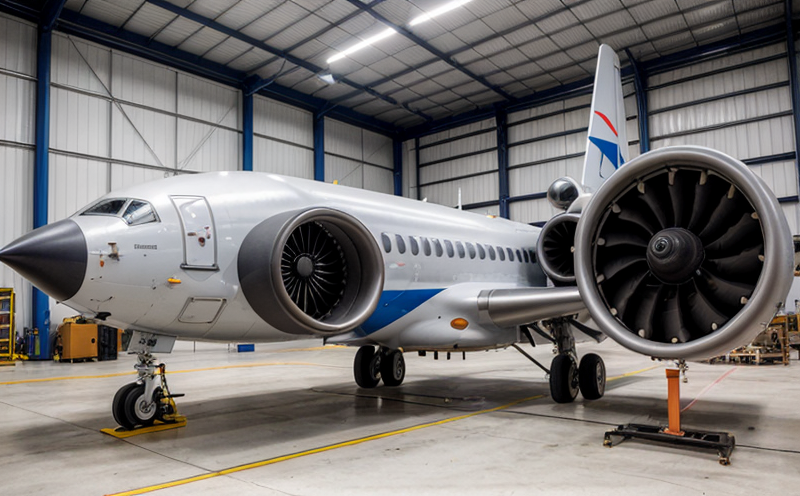Structural-Borne Noise Testing of Military Vehicles
The structural-borne noise testing of military vehicles is a critical process that ensures the reliability and performance of complex systems. Structural-borne noise refers to vibrations transmitted through solid structures, which can be converted into sound by various components within the vehicle. This test plays an essential role in aerospace and defense applications where robustness and minimal acoustic emissions are paramount.
The primary objective is to identify and mitigate sources of unwanted noise that could compromise mission effectiveness or operator safety. Military vehicles operate under harsh conditions, subjecting their structural integrity to extreme stress. By testing for structural-borne noise, engineers can evaluate the overall durability and performance of these structures over time. This service not only enhances product quality but also ensures compliance with stringent international standards like ISO 16734:2005.
During the test, specimens are subjected to controlled mechanical stimuli designed to replicate real-world operational scenarios. The process involves measuring both the input excitation and the resulting structural-borne noise output at multiple points on the vehicle's structure. Advanced signal processing techniques allow for precise analysis of the data collected from accelerometers placed strategically across different parts of the vehicle.
The findings help in optimizing designs by pinpointing areas where improvements are needed to reduce unwanted vibrations effectively. This leads not only to quieter operations but also contributes significantly towards enhancing the overall efficiency and reliability of military vehicles.
Scope and Methodology
| Aspect | Description |
|---|---|
| Test Specimens | In this service, the test specimens are typically subassemblies or complete military vehicles. These structures must be representative of typical operating conditions. |
| Excitation Types | The excitation can come from various sources such as engine vibrations, road impacts, or even human-generated forces depending on the vehicle type and intended use case. |
| Data Acquisition | A network of accelerometers captures the structural-borne noise signals. These sensors are calibrated accurately to ensure reliable measurements. |
| Analysis Techniques | The collected data undergoes spectral analysis using Fast Fourier Transform (FFT) methods to determine frequency components contributing most significantly to overall noise levels. |
Why Choose This Test
Selecting structural-borne noise testing for military vehicles is crucial due to several reasons. Firstly, it helps in reducing operational noise which can significantly affect crew comfort and communication within the vehicle. Secondly, lower noise levels contribute positively to maintaining stealth capabilities—a critical aspect of many defense applications.
From a safety perspective, minimizing structural-borne noise ensures better fatigue resistance of materials used in construction, thereby extending service life without compromising on performance standards. Compliance with industry-specific regulations and guidelines further adds value by ensuring that the final product meets all necessary requirements set forth by governing bodies worldwide.
The importance of this testing cannot be overstated when considering its role in enhancing mission success rates through improved reliability and reduced maintenance costs over extended periods. With increasing emphasis on sustainable practices across sectors, incorporating structural-borne noise tests early in the design phase offers long-term benefits both economically and environmentally.
Environmental and Sustainability Contributions
The practice of conducting structural-borne noise testing contributes positively to environmental sustainability by promoting more efficient use of resources during manufacturing processes. By identifying potential issues early in development cycles, manufacturers can implement design changes aimed at reducing energy consumption throughout the lifecycle of their products.
Additionally, quieter vehicles contribute less to noise pollution outside operational environments, thus supporting healthier communities around military bases and facilities. Sustainable practices extend beyond just environmental impacts; they also encompass social responsibility aspects such as improving working conditions for employees involved in production processes.





